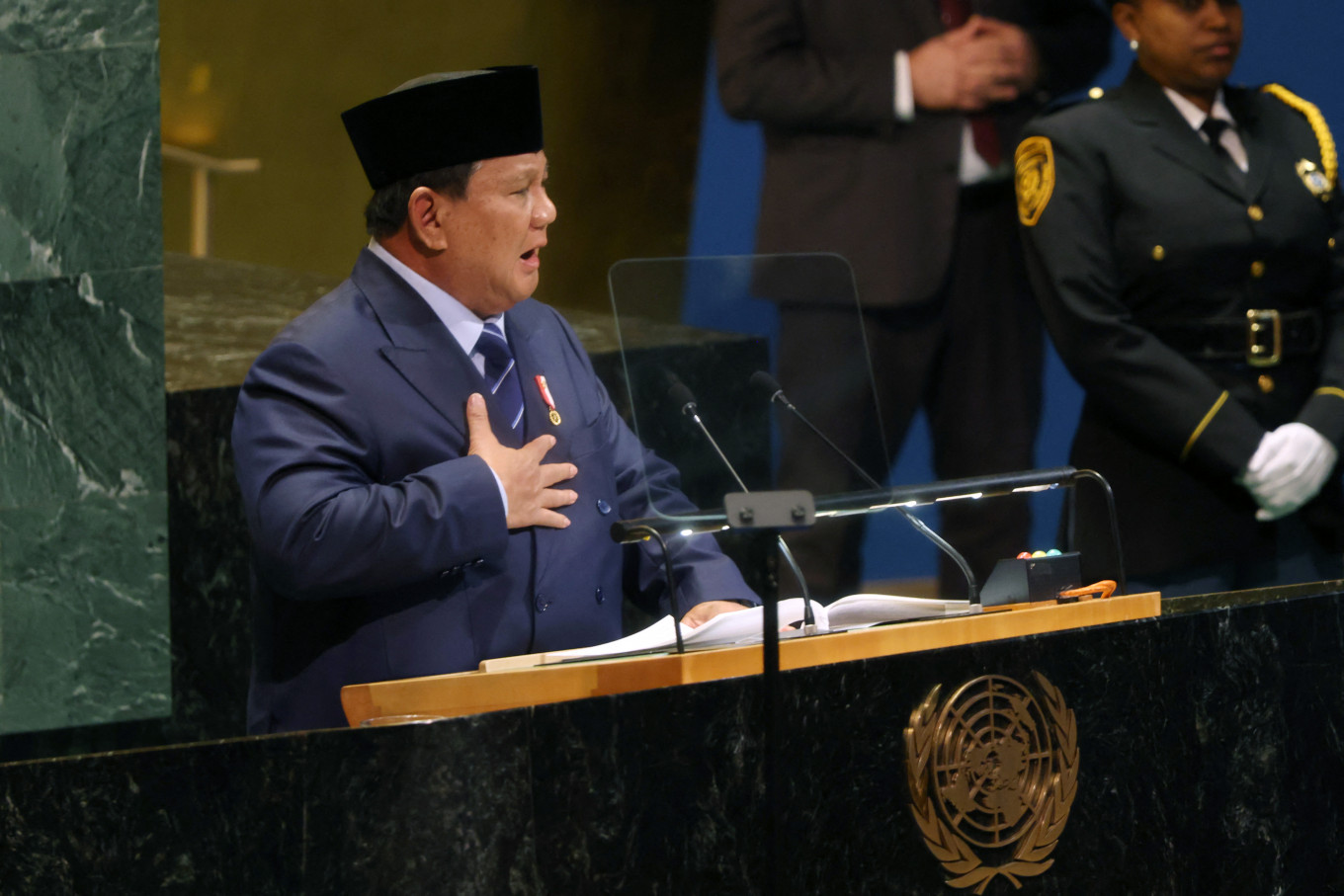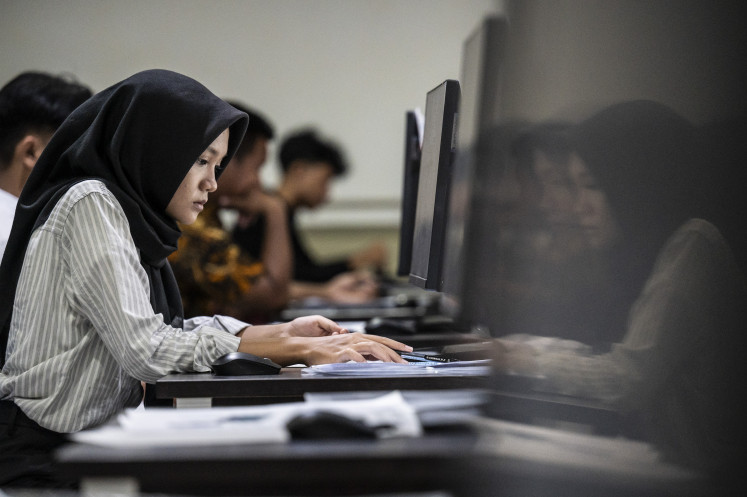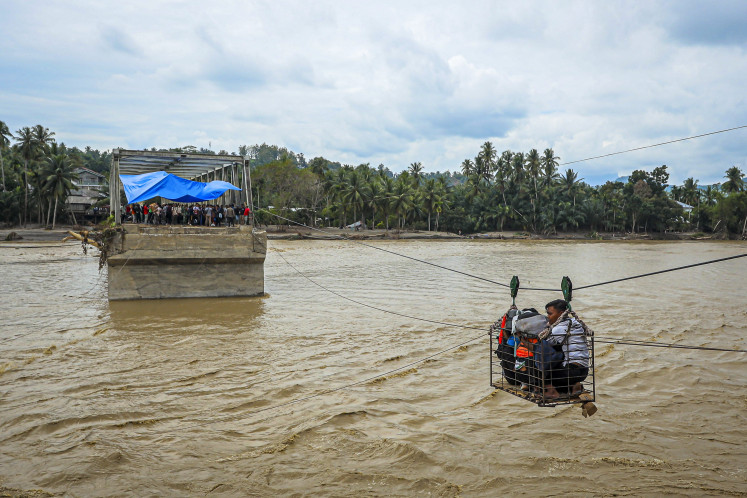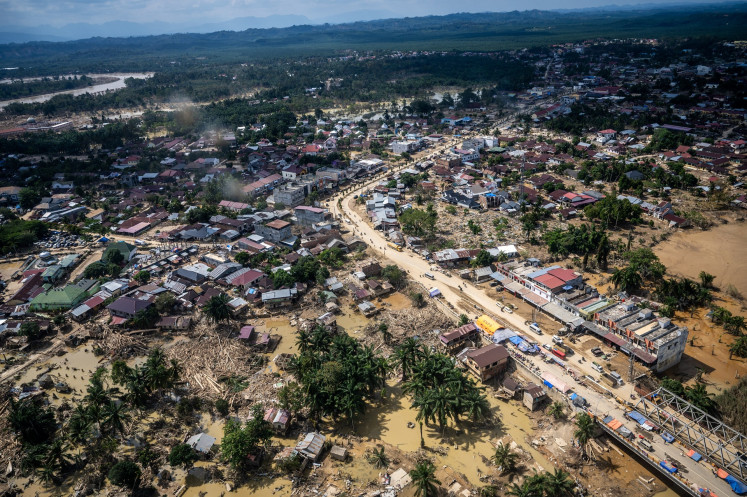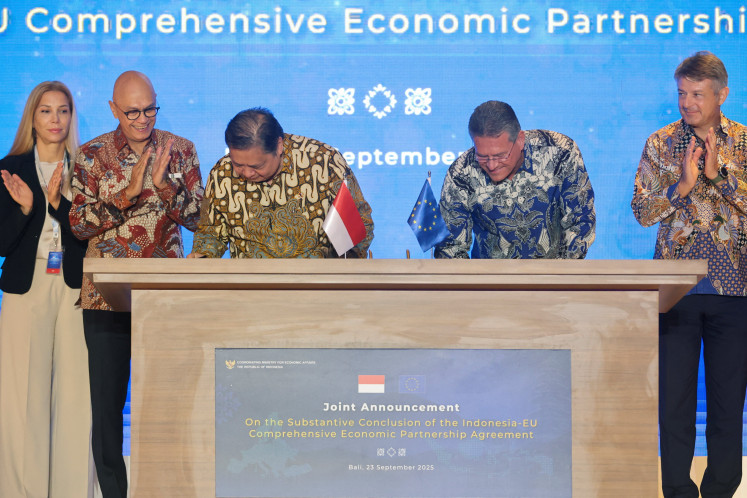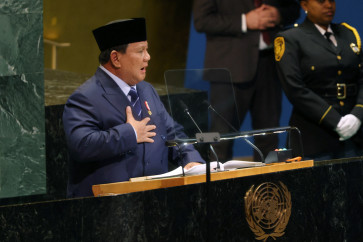Popular Reads
Top Results
Can't find what you're looking for?
View all search resultsPopular Reads
Top Results
Can't find what you're looking for?
View all search resultsIndonesia’s UNGA climate pledge faces real test at home
While the President's address at the 80th UNGS signaled ambition, implementing the 2025-2034 RUPTL with de-risking mechanisms, clear financing solutions, a decisive move away from coal and other detailed steps is the real test.
Change text size
Gift Premium Articles
to Anyone
O
n Sept. 23 in New York City, President Prabowo Subianto delivered Indonesia’s first address at the United Nations General Assembly (UNGA) in a decade, his remarks spanning conflict, peacekeeping and global cooperation.
Equally notable were his statements on climate and renewable energy, outlining long-term commitments central to Indonesia’s development path and presenting a sober picture of the country’s climate reality. The President pledged a decisive shift from fossil fuels to renewables, promising that “from next year, most of our additional power generation will come from renewables”.
The message to international audiences was clear: Indonesia is tackling climate change with concrete steps. Yet the real test lies not at the UN but at home: implementing the 2025-2034 Electricity Supply Business Plan (RUPTL).
Indonesia’s climate challenges are not abstract. Sea level rise, unpredictable rainfall and intensifying heat waves already threaten food systems, water resources and coastal livelihoods. Prabowo’s claim that Indonesia could become the “granary of the world” depends on whether climate-smart agriculture and resilient energy systems can be built fast enough.
Feeding the world requires power grids that can sustain irrigation, cold storage and processing facilities without deepening coal dependence. That is why the 2025-2034 RUPTL matters. It is the blueprint for where capacity will come from and what role renewables will play.
Launched in June 2025 by state electricity company PLN, the new RUPTL outlines 69.5 gigawatts (GW) of planned additions, 76 percent of which will come from renewable energy and storage systems. Solar will lead with 17.1 GW, followed by hydro (11.7 GW), wind (7.2 GW) and geothermal (5.2 GW). Another 10.3 GW will come from storage, including batteries and pumped hydro.
The plan introduces the Green Enabling Super Grid, connecting renewable-rich regions such as Nusa Tenggara, Maluku and Sulawesi to demand centers on Java and Sumatra. By 2034, it aims to integrate 27 GW of solar and wind, five times the previous RUPTL’s projection.

